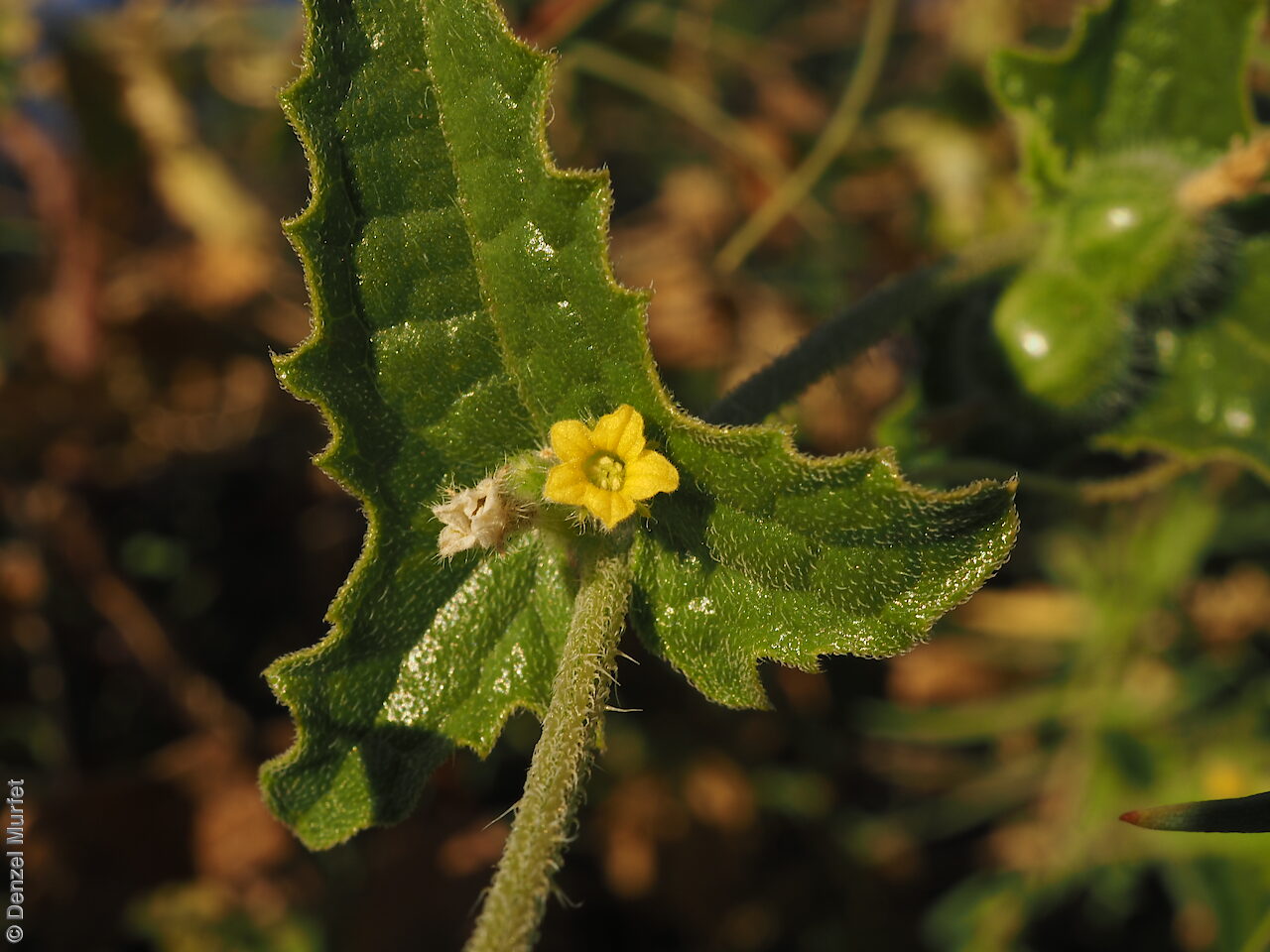














Botanical art
Prior names
Cucumis maderaspatanus
Melothria maderaspatana
Mukia maderaspatana
Common names
Papawitilpa
Snake Vine
Etymology
Cucumis from Latin meaning cucumber and the word was derived from the Greek 'kykyon' meaning cucumber. Argenteus from the Latin 'argentum' meaning silver; referring to the greyish tomentose hairs.
Distribution and status
Found scattered across the northern part of South Australia, growing in woodland or grassland, mostly on sandy soils. Also found in Western Australia, Northern Territory and Queensland. Native. Common in South Australia. Common in the other states.
Herbarium regions: North Western, Lake Eyre, Gairdner-Torrens, Flinders Ranges, Eastern
NRM regions: Alinytjara Wilurara, South Australian Arid Lands
AVH map: SA distribution map (external link)
Plant description
Annual vine growing from a perennial rootstock with stems trailing or climbing to 3 m long, scabrous. Leaves subsessile or with petioles to 2 cm long, leaves ovate, lanceolate or triangular, to 11 cm long and 11 cmwide, cordate, unlobed to 3–5-lobed, lobes rounded to triangular, dentate, hairy. Inflorescence a small cluster in axil of leaves with yellow flowers, male flowers in 2–15-flowered clusters, female flowers in 2–20-flowered ckusters, rarely co-axillary with males. Flowers in summer. Fruits are green to red, fleshy, subglobose fruit to 12 mm diameter, hairy.
Seed collection and propagation
Collect seeds between February and April. Collect maturing fruits, those that are large and turning green-red and with hard seeds inside. Place the fruit in a bucket of water and rub the flesh off with your hands. Drain the water and wash again if required to remove all the flesh. Then spread the wet seeds on some paper towel and leave to dry. Store the seeds with a desiccant such as dried silica beads or dry rice, in an air tight container in a cool and dry place. Seeds are non-dormant, viable seed should germinate readily.
| Location | No. of seeds (weight grams) | Number of plants | Date collected | Collection number Collection location | Date stored | % Viability | Storage temperature |
|---|---|---|---|---|---|---|---|
| MSB | 400 (5.5 g) | 30-40 | 24-Nov-2005 | DJD231 Flinders Ranges | |||
| MSB | 470 (6.62 g) | 30-40 | 24-Nov-2005 | DJD231 Flinders Ranges |
Number of plants: This is the number of plants from which the seeds were collected.
Collection location: The Herbarium of South Australia's region name.
% Viability: Percentage of filled healthy seeds determined by a cut test or x-ray.